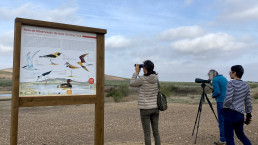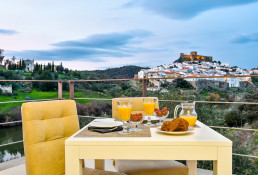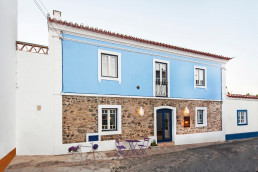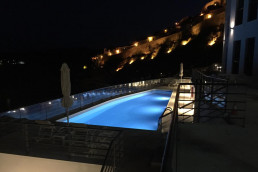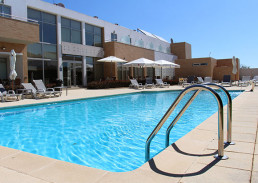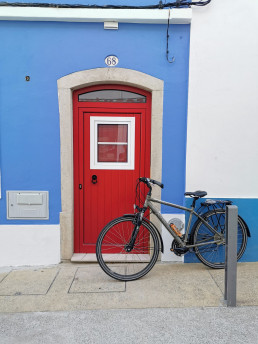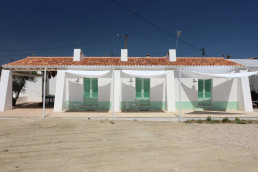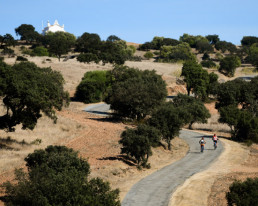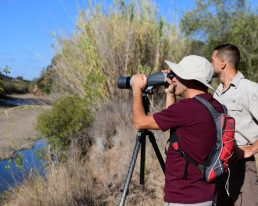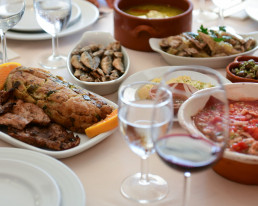The Birding Trail will guide you through ten very special spots between the municipalities of Mértola and Castro Verde. Covering distinct habitats, ranging from cereal steppes and steep river valleys to weirs and dams, there is an immense birdlife to discover during the different seasons.
Distance
78 km
Highest point
220 m
Lowest point
11 m
The trail is accessible by motor vehicles or bicycle and can be done in either direction. At each point, it is possible to observe a variety of species which occur and nest in the southern Alentejo region. There are 10 points to discover, crossing the parishes of Entradas, São Marcos da Ataboeira, Alcaria Ruiva and São João dos Caldeireiros.
Stay at each point for a few minutes, always in silence to avoid disturbing the birds. In some points, we recommend you to take a short walk, and have higher chances to listen and observe the more timid species. Always keep a safety distance!
We recommend you contact a local guide or a company specialized in birdwatching, to get the most out of your tour. In each stage page, you will find a selection of experiences and accomodation along the route.
The Route can also be done on your own, in this case, don’t forget to bring your binoculars and bird identification guide!
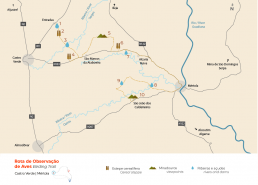
Where to go each season?
In spring, the landscape, painted with green and flowers, is filled with a constant buzz: the frenzied bees and the birds, here and there, displaying their nuptial behaviour. It’s time to find partners, look for nest sites and feed the chicks.
Visit the cereal steppes and it is very likely that you will find, among other species, Great Bustards (Otis tarda), painting the landscape white; Montagu’s harrier (Circus pygargus), gliding in search of food; or Lesser Kestrels (Falco naumanni), sifting through the vegetation. The viewpoints and river valleys are also a great option to visit during this season of the year.
The dry season extends from the end of May to the end of September. Water is scarce in the landscape, plants lose their greenness and the air heats up. But neither the drought nor the high temperatures frighten the birds that breed here. There is immense activity, as birds look for food to feed their chicks, and in late summer, young birds fill the skies on their first discovery flights.
We recommend you to go birding early in the morning or late in the afternoon. During the peak of the day, birdwatching is much more difficult. Visit ponds and weirs, there is a good chance of finding water birds.
Autumn is time to depart for many birds, those that head south after the breeding season. Many others birds arrive from northern, central and eastern Europe, sometimes staying for the winter, sometimes passing through, taking the opportunity to stop and regain strength to continue their journey.
Visit the viewpoints, the dams and the weirs and keep an eye on the skies: flocks of birds of all sizes are migrating; even at night, various species can be seen and heard migrating.
During the coldest season, the montados and the cereal steppes are visited by birds that come from other latitudes where food becomes scarce due to the harsh winter there. Among the various species that winter in the Southern Alentejo, the Cranes (Grus grus) are probably the most audible and easy to spot; they fly in groups of dozens or hundreds and move between the montados in search of food and small ponds or dams where they spend the night.
With the sowings already prepared for spring, many birds circle and fly over the fields in search of food. The mild winter and moderate temperatures that characterise winter in this region, provides excellent conditions for birding during this season of the year.
Discover the 10 points
① Entradas Reservoir
Located in Entradas, after the exit towards São Marcos da Ataboeira. It has a small picnic area and shade.
② Steppe – Panoramic view
Located on the road that connects Entradas and São Marcos da Ataboeira, it offers a panoramic view over the Castro Verde cereal steppe. You can take a short walk from this point.
③ Terges River
The road between Entradas and São Marcos da Ataboeira crosses the Ribeira de Terges. Allow yourself to stop for a few moments to listen all the small passerines around. This narrow river is a haven for birds in summertime.
⑤ Nª Srª de Aracelis
Aracelis marks the border between Castro Verde and Mértola municipalities. A small white chapel sits on the top of the hill offering a 360 view over the mosaic landscape. Spend sometime and take your telescope with you.
⑥ Benviúda
Along the N123, you will find the billboard in the opposite side of Benviuda's exit. If you are driving, park your car and take the chance to do a small walk along the dirt path. Or find a cycling route that crosses that point. A pretty bucolic feeling, with white sheep scattered across the landscape.
⑦ Alvacar river – Navarro
Exit N123 on the road towards Navarro. The road is crossed by the Alvacar river, creating an unique habitat for many small birds, especially during winter to spring. In the summer, often the creek dries out.
⑧ Água Santa da Morena
At Água Santa da Morena, the Oeiras river establishes the border between the São João dos Caldeireiros and Mértola. A recommended stop, it offers a small, shaded picnic park. Ideal for summer days.
⑨ Alvares reservoir
Along the dirt track that connects Alvares to Romeiras, stop at the weir and allow yourself to stay for a while. Apart from the many species that approach the water, in the surrounding hills there are great chances of seeing birds of prey.
⑩ Iberian-Lynx Lookout
The Iberian Lynx lookout is located next to the Church of São João dos Caldeireiros, and offers a spectacular view over the hills. These area was the first place where the first lynx was released, back in 2015. It is excellent to spot birds of prey.
Where to sleep along the route?
Quinta do Vau
Accommodation
With a unique panoramic view of the Guadiana River and the historic centre of Mértola, Quinta do Vau turns your stay into an experience. Every morning or evening the view of the river and “old town” in the background are moments that linger in the memory of those who stay here.
Monte da Apariça
Accommodation
The “soul” of the Rural Tourism Monte da Apariça lies in the land (or, as so called, in the “Herdade”), where the scent of earth, flowers, grass and animals blend in the air. One only distracts from this scent when staring into the horizon that, from the top of the Monte, stretches out to the infinite Alentejo. Birdwatching is the heart of Apariça because, in this place, you can watch unique birds, many of which of protected species. In Monte da Apariça there is absolute peace! Anywhere in the Herdade, or simply under the porch, while having a typical lunch or just a break.
Casa da Tia Amália1
Accommodation
As the name states, this was “Aunt Amalia's Home”. Casa da Tia Amália is a family house with a cosy atmosphere. Apart from double-rooms, it has some small-aparments with kitchnet, making it ideal for family-stays.
In Mértola, lays on margin with a priviledge view over the oldtwon. The house, which was almost in ruins, has been restored, and its spaces designed for comfort, scattered with details that show the care and dedication that the young owners put on restoring it. Quality and warm welcome are guaranteed.
Hotel Museu
Accommodation
It was supposed to be a normal hotel, but when it began to be built several traces of bygone days were found. In the area where the hotel is, there was an Islamic neighbourhood and below it a Roman warehouse. The Hotel Museu is a novelty in Portugal's tourism landscape, with a unique location by the Guadiana river in the historic centre of Mértola, allowing tourists to have a unique experience. Next to the reception of this hotel is a museum, with an area of about 100m², where will be exhibited a representative collection of archaeological work developed there, which will feature quite rare pieces.
Herdade dos Castelejos
Accommodation
Casa dos Castelejos offers a bucolic experience, with fair touch of modernity and good taste. Located in Guerreiros, a small village amidst the cereal crops, this is the place to be if you are looking for steppe birds. Relax on a cosy atmosphere and enjoy the view. Here time seems to last longer. It is located in the core area of the Birding Trail.
Hotel “A Esteva”
Accommodation
A three-star hotel that blends in with the plains and the white houses of the village of Castro Verde. A privileged location in the town with great accessibility, it offers a bright and cozy atmosphere.
4Bs – B&B, Birds & Bicycles – Apartment
Accommodation
The 4Bs is a family project in Castro Verde for nature and outdoor activities lovers. The name came up very naturally: "birds" for all the protected bird species that surround us in this region, "bicycles" for our special fellings towards this vehicle :), and of course "Bed & Breakfast" for the kind of accommodation we were offering.
They offer na apartment, a triple bedroom, a slot for a van and Glamping: This spacious tent has 1 double bed and 2 single beds. There is a shared outdoor kitchen fully equipped and free solar warmshower. The homestay also offers bike hire.
Herdade de Alagães
Accommodation
The Herdade de Alagães is located in southern Portugal, between the Castro Verde IBA Biosphere Reserve and the Guadiana Valley Natural Park. We are dedicated to sustainable tourism, nature conservation and agroforestry. The property is crossed by the Ribeira de Alvacar and it is a highly-biodiverse area; it is a great location for birdwatching. / The rooms for accommodation were recovered as sustainable buildings, keeping the rammed earth (taipa) walls. The wood-oven house was also repurposed as a small support kitchen for the guests. The property, 260ha in total, includes various paths for nature walks and biking.
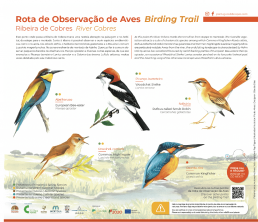
Along the route you will find these panels / billboards. The illustrations are by the ornithologist and illustrator Paulo Alves. The texts, in Portuguese and English, were written by João Jara and Ray Tipper.

